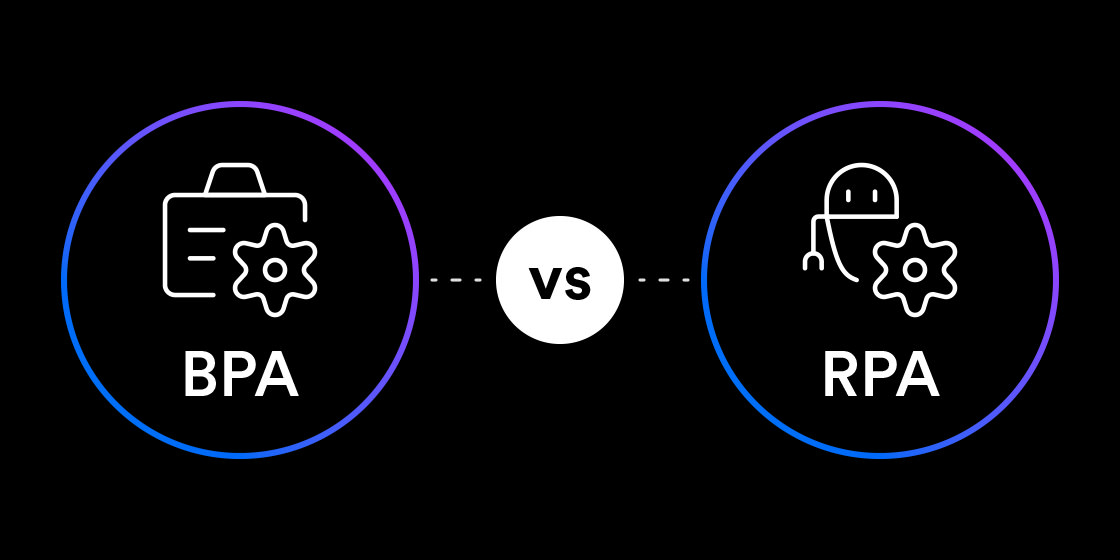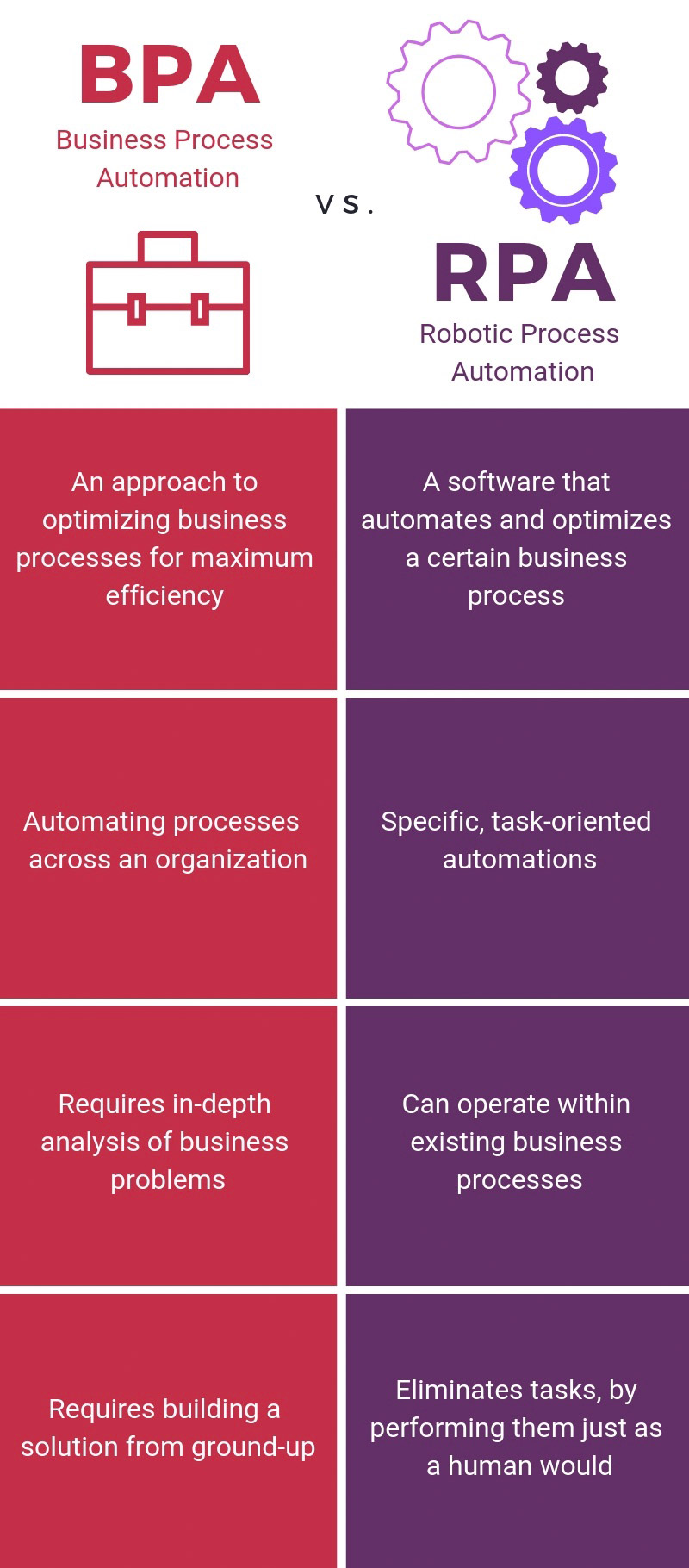Comparing BPA and RPA
May 08, 2019 by Jessica Munday

Technology is constantly changing and innovating, making it easier to navigate the world around us while increasing human productivity in the process. However, it can be challenging to keep up with the ever-changing landscape.
There’s an acronym for nearly everything these days (AI, RPA, BPA, IA, DL, ML, the list goes on and on). It’s tough to differentiate business technologies to ensure you’re getting the exact capabilities you need.
We’ve created a series of content pieces to help you learn the key differences between various types of automation and intelligent technologies, and show you some possibilities for how they can be implemented.
First, we’re comparing BPA vs RPA.

What is business process automation?
Business process automation (BPA) is an approach to optimizing entire business processes with automation. The goal is to eliminate repetitive workflows to improve efficiency and productivity.
Business process automation doesn’t focus on one department or process, but rather looks at the organization on a holistic level to see which processes could be improved through automation. BPA covers end-to-end automation of a certain process or workflow.
With business process automation, typically an in-depth analysis of the business’s inefficiencies is required to assess the largest problems the organization is facing. It usually also involves building a solution from the ground up, rather than adjusting and optimizing existing processes.
What is robotic process automation?
Then there’s robotic process automation, which is software that enables business process automation. Rather than attempting to automate an entire workflow, its task-oriented automations eliminate an existing process or co-exist within current processes to perform them more efficiently.
A key differentiator of RPA is that the technology automates and completes tasks. However, RPA is not a machine or robot — it’s a software or application that replicates employee behavior by interacting with a user/web interface the same way a human would.
RPA can be applied to various computer tasks to accelerate the speed and efficiency they are performed. Some use cases include: website scraping, payroll processing, document generation, underwriting loans, claims processing, membership renewals, order processing, and shipping notifications.
The market for RPA is quite promising. Gartner recently calculated global RPA revenue on this technology to hit nearly $2 billion in 2021, with expectations that the market will continue to grow at double-digit rates through 2024.
By 2025, the economic impact of implementing RPA into organizations is expected to reach $55 billion, with 35 million employees interacting with the technology regularly.
BPA vs RPA
Recently, robotic process automation has stepped into the spotlight. This is likely due to the simplicity of implementing and adopting it compared to BPA, which requires much more legwork.
While RPA has become the more popular of the two, this doesn’t mean BPA isn’t important. In fact, when looking at BPA vs RPA, many will find they are just two different approaches to reaching the same goal.
They both aim to drive efficiency and productivity throughout an organization by automating processes, and often these two types of automations can work in tandem. The key is knowing the difference and identifying which technology (or combinations of technologies) is best for your organization.
If your business has major automation needs and requires a deep analytical assessment, then BPA may be the best bet. If you’re looking to optimize existing processes or just continue operations until you can do a major automation fix, use RPA.
Close Window
Automation Hero will track how you use the emails (e.g., at what time you open which part of the emails) sent by Automation Hero. If you have provided a separate declaration of consent that cookies for tracking your usage of the website and/or apps may be placed on your device, Automation Hero will also connect the information about your use of Automation Hero’s websites and apps (e.g., which information you open) collected by the tracking cookie to such information in so far as possible. Automation Hero will analyze such information, to identify your interests and preferences and to communicate with you in a more personalized and effective way, e.g. by providing information that you are likely interested in, like information on new technologies or products of the Automation Hero group that are likely relevant to you.
